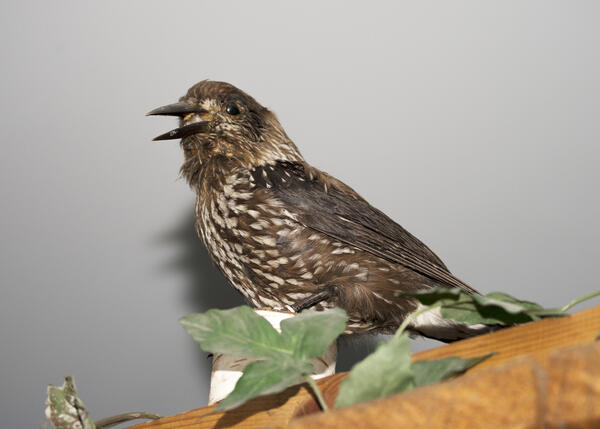European starlings can reach up to 22 centimeters in length and weigh from 50 to 100 grams. Both males and females have iridescent green plumage, and black wings with a greenish-purple hue. In winter time, white and cream-colored spots appear, first and foremost, on their chests. Their feathers are rounded at the base and sharper at the edges. Young starlings are light brown in color until their post-juvenile molt. During the breeding season, the beaks of the birds are yellow, while at other times, they are black.
The species are found in all the biogeographical regions of the world with the exception of the Antarctic. Common starlings are migratory birds. From northern and eastern parts they migrate, for the winter, to western and southern Europe; Africa, north of the Sahara Desert, e.g Egypt; northern Arabian Peninsula and Iran, as well as the plains of northern India. Common starlings build their nests in natural and artificial cavities of trees and buildings. They are more aggressive than other birds and can kill a rival in order to gain access to a nesting spot. These birds build their nests out of grass, branches and moss, and line them with fresh leaves. The latter have antibiotic and antifungal properties, thus common starlings periodically replace them.
They find food in open areas, such as fields and pastures. Young starlings have a primarily animal-based diet, for example, they eat invertebrates. Adult birds prefer consuming plants. In fact, they often gather on tress with ripe fruit. Since European starlings typically travel and hunt for food in flocks, all of their members watch out for any predators nearby and try to scare them away.
Their mating season starts in spring. All the females lay from 4 to 7 shimmering blue or greenish-white eggs within a week. Both parents take turns sitting on the eggs but, overall, female birds spend more time in their nests than males do.
European starlings make loud noises the whole year around with the exception of the molting season. The songs sung by male species are varied and include many elements in them. These birds can warble, chirp, whistle, squawk and chatter. Starlings can also imitate other birds and animals and even produce mechanical sounds. In captivity, the birds learn to imitate human voices.
The species are found in all the biogeographical regions of the world with the exception of the Antarctic. Common starlings are migratory birds. From northern and eastern parts they migrate, for the winter, to western and southern Europe; Africa, north of the Sahara Desert, e.g Egypt; northern Arabian Peninsula and Iran, as well as the plains of northern India. Common starlings build their nests in natural and artificial cavities of trees and buildings. They are more aggressive than other birds and can kill a rival in order to gain access to a nesting spot. These birds build their nests out of grass, branches and moss, and line them with fresh leaves. The latter have antibiotic and antifungal properties, thus common starlings periodically replace them.
They find food in open areas, such as fields and pastures. Young starlings have a primarily animal-based diet, for example, they eat invertebrates. Adult birds prefer consuming plants. In fact, they often gather on tress with ripe fruit. Since European starlings typically travel and hunt for food in flocks, all of their members watch out for any predators nearby and try to scare them away.
Their mating season starts in spring. All the females lay from 4 to 7 shimmering blue or greenish-white eggs within a week. Both parents take turns sitting on the eggs but, overall, female birds spend more time in their nests than males do.
European starlings make loud noises the whole year around with the exception of the molting season. The songs sung by male species are varied and include many elements in them. These birds can warble, chirp, whistle, squawk and chatter. Starlings can also imitate other birds and animals and even produce mechanical sounds. In captivity, the birds learn to imitate human voices.



